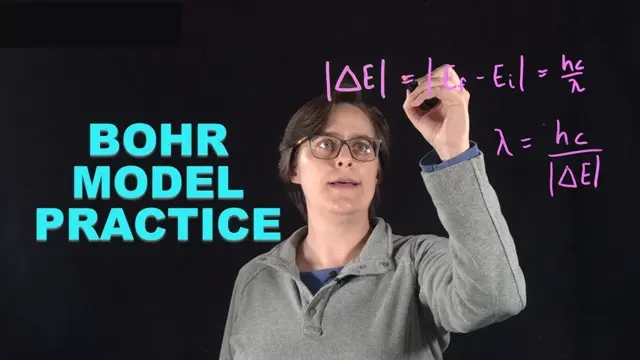2025-07-09
[public] 50.0 views, 11.0 likes, dislikes audio only
4KPut your knowledge to the test with these Bohr model practice problems! In this video, we walk step-by-step through two classic calculations involving electron transitions in the hydrogen atom.
Perfect for general chemistry students, this clear explanation covers:
0:00 Problem 1: Energy of e- in H with n=3
1:40 Problem 2: e- in H transitions from n=4 to n=2
2:00 Problem 2a: Energy absorbed or emitted?
2:19 Problem 2b: Energy in joules?
4:14 Problem 2c: Wavelength?
5:44 Problem 2d: What part of EM spectrum?
5:57 Limitations of Equations!
Related concepts video 👉 /youtube/video/ccpnNyhyxwo
Problem 1: What's the energy in joules (J) of an electron in a hydrogen atom with n=3?
Problem 2: An electron in a hydrogen atom transitions from n=4 to n=2.
a) Is energy absorbed or emitted?
b) What's the energy in joules?
c) What's the wavelength in meters?
d) In what part of the electromagnetic spectrum do we find this radiation? What color?
What is an atom? Watch the whole playlist: https://www.youtube.com/playlist?list=PLvUW25kBaMMszGN5XY0QXNP_t-9Z-B8C2
Playlists to ACE Chemistry:
https://www.youtube.com/playlist?list=PLvUW25kBaMMssGHFrR4Ee7_-8cFBvBkgN
https://www.youtube.com/playlist?list=PLvUW25kBaMMs9m0GL4dz8jSs0K4PWfqCp
https://www.youtube.com/playlist?list=PLvUW25kBaMMvs5nsG1VUQA0wsP9LGEQha
https://www.youtube.com/playlist?list=PLvUW25kBaMMuKRkW9gDV7vlAk4Y9WRU7c
https://www.youtube.com/playlist?list=PLvUW25kBaMMuHwUffHLOozSFQ0Cz_iTnC
https://www.youtube.com/playlist?list=PLvUW25kBaMMv7_3jTEAe3vVZqPhsjf5Oy
https://www.youtube.com/playlist?list=PLvUW25kBaMMtc45U4K2b0Dm88L9D7d0EE
PATREON: https://www.patreon.com/c/ChemistryinaNutshell
Citations:
OpenStax Chemistry 2e. Flowers, P., Theopold, K., Langley, R., & Robinson, W.R. (2019, Feb 14). Chemistry 2e. OpenStax. https://openstax.org/details/books/chemistry-2e
OpenStax Chemistry 2e, Figure 6.13 Compare the two types of emission spectra: continuous spectrum of white light (top) and the line
spectra of the light from excited sodium, hydrogen, calcium, and mercury atoms. Continuous spectrum and emission spectrum of calcium were used to show continuous and discrete spectra of a rainbow.
OpenStax Chemistry 2e, Figure 6.3 Portions of the electromagnetic spectrum are shown in order of decreasing frequency and increasing wavelength. (credit “Cosmic ray": modification of work by NASA; credit “PET scan": modification of work by the National Institute of Health; credit “X-ray": modification of work by Dr. Jochen Lengerke; credit “Dental curing": modification of work by the Department of the Navy; credit “Night vision": modification of work by the Department of the Army; credit “Remote": modification of work by Emilian Robert Vicol; credit “Cell phone": modification of work by Brett Jordan; credit “Microwave oven": modification of work by Billy Mabray; credit “AM radio": modification of work by Dave Clausen)
Music:
Banjo Fever by Alexander Nakarada (CreatorChords) | https://creatorchords.com
Music promoted by https://www.free-stock-music.com
Creative Commons / Attribution 4.0 International (CC BY 4.0)
https://creativecommons.org/licenses/by/4.0/
/youtube/video/3TUGRJgqG3k?t=0
/youtube/video/3TUGRJgqG3k?t=100
/youtube/video/3TUGRJgqG3k?t=120
/youtube/video/3TUGRJgqG3k?t=139
/youtube/video/3TUGRJgqG3k?t=254
/youtube/video/3TUGRJgqG3k?t=344
/youtube/video/3TUGRJgqG3k?t=357
/youtube/channel/UCXPqF6wEXTcFtml-mF7_J9w
/youtube/video/CjwxFLbXgkY
https://www.patreon.com/ChemistryinaNutshell
/youtube/video/ccpnNyhyxwo

